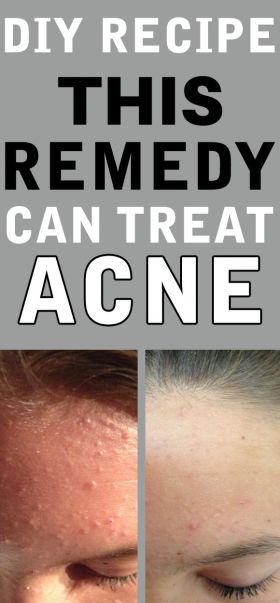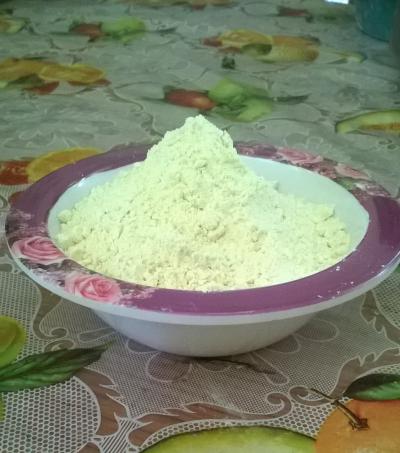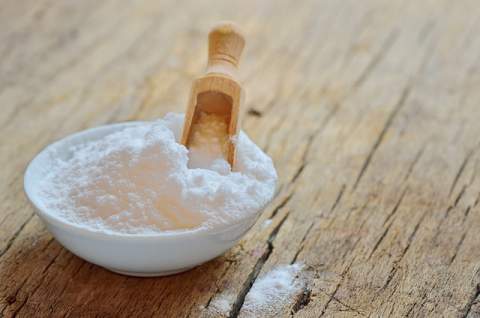When it comes to skin related problems, you will quickly find acne on the top of the list. It is a prevalent condition occurs when the hair follicles plug with oil and dead skin cells. It is generally a chronic condition accompanied by inflammation of the skin. It causes dark as well as light spots on the skin and pimples as well.
It can appear on different parts of the body including face, neck, chest, back, shoulder, and upper parts of the arms. There are so many causes of acne which will be discussed later.
This write-up is about using hydrogen peroxide for acne. We will try to learn about the causes of acne, benefits of hydrogen peroxide in case of acne as well as how to use hydrogen peroxide more effectively to get rid of acne.
After all these, we will try to figure out some handy tips to prevent acne. Let’s start with the causes of acne.
What Causes Acne?
There is not a single cause of acne. It is a combination of some factors including genetics, diet, stress, pressure and drugs. It is hard to find out a single cause of acne in a particular person. Genetics is one of the most common causes of acne.
If even one of your parents had acne in the past, it is very likely that you will also get acne and it will be complicated to control. In more than 70% of cases where mother or father had acne in the past, the next generation also suffered with it.
Another prevalent cause of acne is diet. If you do not have proper and healthy eating and if you are fond of excessive junk food, then be aware, you are most probably going to be affected with acne.
Stress, pressure and side effects of drugs are also considered as the prominent causes of acne.
What Does Hydrogen Peroxide Do for Acne?

(Some notable benefits of H2O2 for skin and acne)
This question worth to have attention. Why is Hydrogen Peroxide very useful to get rid of acne? Why is concentrated hydrogen peroxide full of skin related benefits? In this part of the article, we are going to discuss some of the most beneficial properties of hydrogen peroxide for acne as well as for the overall health of the skin.
- Get Rid of Acne: Using hydrogen peroxide instead of any other antibacterial soap can help you to speed the healing process after getting affected with acne. Applying it on the acne is equally effective as using on the wounds. It doesn’t only clean the upper layer the skin, and it also kills the unwanted bacteria present below the surface of the skin.
- Soothes Dry Skin: Hydrogen peroxide is an excellent remedy for dry skin. Adding a little amount of hydrogen peroxide to your bath water can be very handy to rejuvenate your body. Its antibacterial and anti-viral properties protect a lot of infections.
- Fantastic Deodorant: Using hydrogen peroxide with dish soap at 1:2 ratio can help you to create a very effective yet very mild deodorant. Applying it under your arms can be very beneficial to get rid of foul odor from your body.
- Detoxifying the Bath: You can get rid of all kinds of infections by just adding a little amount of hydrogen peroxide to your bath water. Soak hydrogen peroxide in the bathtub for at least thirty minutes to make sure you are free from all types of bacterial and fungal infections.
- Treatment of Yeast Infection: Hydrogen peroxide is very good to treat the infection caused due to yeast. It can kill the Candida Albicans very quickly and can stop the spread of infection to different parts of the body.
- Wound Care: 3% hydrogen peroxide is used for cleaning wounds and removing dead tissues from the skin. Hydrogen peroxide effectively stops bleeding and oozing of the wound.
- Combats Allergies: Different types of skin allergies can surround you due to any reason including diet, lifestyle and environment. 3% hydrogen peroxide is very good to get rid of all kinds of allergies.
How to Use Hydrogen Peroxide for Acne?
You can increase the effectiveness of hydrogen peroxide by using it a bit differently and smartly. In this segment of the article, some very efficient recipes using hydrogen peroxide are discussed.
Note: Always try to make sure that the hydrogen peroxide solution is not stronger than 3% of the total solution. If your skin is even a bit sensitive, you must consult a dermatologist before starting its usage.
#1 Hydrogen Peroxide
Hydrogen peroxide is an excellent disinfectant and is capable of destroying the bacteria causing acne. It will assist your skin to heal from acne and acne scars. Besides it, it can also exfoliate your skin to a decent extent and make your skin newer and healthier.
- You should have 3% hydrogen peroxide, a moisturizer, cotton pad, towel and facial cleanser.
- Wash your face using facial cleanser and pat dry.
- Take a little amount of hydrogen peroxide in the cotton pad.
- Apply the cotton with hydrogen peroxide on affected area(s).
- Leave it for 4-5 minutes
- Wash your face with fresh water.
- Use towel for drying your face and moisturize it with a moisturizer.
- Keep repeating the process 3 times a week until you get rid of acne.
#2 Hydrogen Peroxide and Tea Tree Oil
Tea tree oil is an excellent natural remedy for acne. It is known for its antibacterial properties. Hydrogen peroxide and tea tree oil are going to work very effectively in case of acne or even getting rid of acne scars.
- Wash your face properly with a facial cleanser and dry it.
- Mix 1 tbsp. hydrogen peroxide and 8-10 drops of tea tree oil properly in a bowl.
- Apply the mixture on the affected areas (do not apply it near your eyes).
- Keep it on for 5-6 minutes and then wash off with fresh water.
- Pat dry with towel and moisturize with a suitable moisturizer.
- Repeat the process once in a week.
#3 Hydrogen Peroxide and Baking Soda
There is no better option than baking soda when it comes to maintaining the pH balance of your skin. In addition to maintaining the pH level, it can also exfoliate your skin to a decent extent. Baking soda alone is very effective in acne and using it with hydrogen peroxide is going to be destructive for acne.
- Wash your face properly and dry it.
- Mix both 1 tbsp. hydrogen peroxide and 1 ½ tbsp. baking soda thoroughly in a bowl.
- Apply the mixture on your face avoiding the eyes.
- Leave it for about five minutes and then rinse with cold water.
- Dry your skin again with a soft cloth and use a smooth moisturizer.
- Use this method only twice a month.
#4 Hydrogen Peroxide and Lemon
Lemon juice is one of the best fluids when it comes to the skin related problems. It is a wonderful cleansing agent. After mixing it with hydrogen peroxide, it will not only reduce the acne scars, it is also going to make your skin brighter and lighter.
- Take 1 tbsp. hydrogen peroxide and 1 tbsp. lemon juice.
- Mix both the ingredients thoroughly in a bowl.
- Apply the mixture using cotton pads avoiding your eyes.
- Keep it on for at least 5-8 minutes and then wash off with clean water.
- Pat dry with a towel and moisturize it with a suitable and gentle moisturizer.
- You can follow this process 1-2 times a week
#5 Hydrogen Peroxide and Borax
Borax is known for exfoliating the skin and for removing dead cells and bacteria from the skin. Using it with hydrogen peroxide will help you to treat your acne from scratch thanks to its capacity of killing acne-causing bacteria.
- Mix 1 tbsp. hydrogen peroxide, ½ tbsp. borax and a little amount of water.
- Apply the mixture on your face except eyes.
- Leave it for 5-8 minutes and then wash off with clean water.
- Dry your face with a soft cloth and apply any suitable moisturizer.
- Follow the process once a week.
#6 Hydrogen Peroxide and Aloe Vera
Aloe Vera is not less than a precious gift from nature. It is very useful in plenty of health-related problems including skin problems. It can combat the redness of the acne due to its excellent anti-bacterial properties. Its high amount of anti-oxidants can boost the process of healing.
- Wash your face with clean water and pat dry using a soft cloth.
- Saturate the cotton pad with hydrogen peroxide.
- Apply gently on the affected areas and leave for about five minutes.
- Wash off with fresh water and pat dry again with a soft cloth.
- Apply a thin layer of Aloe Vera gel and leave it for at least half an hour.
- Repeat the process for maximum twice a week.
#7 Hydrogen Peroxide with Aspirin
Thanks to its anti-inflammatory properties, aspirin is very good to soothe your skin. Salicylic acid found in aspirin is one of the most common ingredients of most of the acne creams. Combination of hydrogen peroxide and salicylic acid is undoubtedly going to help you to get rid of acne.
- Take 3 tablets of aspirin and make a fine powder.
- Add 5 tbsp. hydrogen peroxide to it.
- Mix both ingredients properly to prepare a fine paste.
- Wash your face with normal water and pat it dry with a soft cloth.
- Apply the mixture on affected areas.
- Make sure that the mixture doesn’t touch your eyes.
- Gently message for 30-40 seconds and then leave for 5 minutes.
- Wash off with cold water and moisturize using a gentle moisturizer.
#8 Hydrogen Peroxide with Apple Cider Vinegar & Witch Hazel
Excessive oil of the skin can aid the acne. Apple cider vinegar is very effective to reduce the oil from skin. It can assist hydrogen peroxide to reduce acne.
However, apple cider vinegar can be a bit harmful for those who have sensitive skin. If you have sensitive skin, you can add Witch Hazel to this recipe. Witch hazel is a wonderful skin toner and it tightens the skin and refines pores.
- Take a half cup of both apple cider vinegar and witch hazel.
- Add 3 tbsp. hydrogen peroxide to it.
- Mix all the ingredients well with a spoon.
- Add a few drops of tea tree and lavender essential oils.
- Pour the mixture into a spray bottle.
- Apply the toner every morning before taking a bath.
#9 Hydrogen Peroxide with Milk Powder
Milk powder contains lactic acid which can improve the tonicity of the skin. Tonicity improving quality of milk powder and lightening and scar reducing power of hydrogen peroxide can be a great combination for getting rid of acne.
- Mix two tbsp. milk powder and half tbsp. hydrogen peroxide properly.
- Add glycerin or honey for moisturizing the skin.
- After mixing all the ingredients well, apply it on the affected area(s).
- Leave it for 15 minutes and then wash off with fresh water.
- Use a gentle moisturizer if you feel dryness of the skin.
#10 Hydrogen Peroxide with Clay and Tea Tree Oil
Natural and pure clay can be very beneficial for skin. It can absorb the excessive oil from the skin. Tee tree oil included in this recipe is an excellent bio-stimulator, which aids the regeneration of the skin cells. Both these ingredients with hydrogen peroxide can be very handy to remove acne as well as acne scars.
- Mix hydrogen peroxide and clay in equal proportions.
- Mix well until you observe some bubbles.
- Add 5-6 drops of tea tree oil and keep aside for 5 minutes.
- Apply the mixture properly on the face.
- Keep your face covered with a wet handkerchief or tissue paper for 5 minutes.
- Wash your face under running water.
- Follow the procedure once in a week.
#11 Hydrogen Peroxide with Yeast and Grapeseed Oil
Yeast is more than suitable for most of the skin related problems. It is very effective especially in case of dry skin. Moisturizing capacity of yeast and cleansing property of grapeseed oil are considered very safe and effective with hydrogen peroxide. This combination doesn’t only cleans your face, it is very effective in maintaining the natural shine of the skin as well.
- Mix 1 tbsp. hydrogen peroxide and 1 tbsp. yeast.
- Add a half tbsp. grapeseed oil and mix all the ingredients properly.
- Apply a thin layer on the affected area(s).
- Leave it for 20 minutes and then wash off under running water.
- Follow the procedure twice a week for better results.
#12 Hydrogen Peroxide with Calendula and Rice Flour
Antiseptic and antimicrobial properties of calendula are only going to assist the healing acne. Calendula oil itself is used for plenty of skin related problems including eczema, acne and psoriasis. Anti-ageing and oil-absorbing properties of rice flour can also prove very handy to reduce acne.
- Add 1 tbsp. hydrogen peroxide and 1 tbsp. rice flour and mix them well.
- Add 10-15 drops of calendula tincture.
- Mix all the compositions properly and apply on the affected area(s).
- Leave for 15 minutes and then wash with lukewarm water.
- Follow the procedure thrice a week for excellent results.
Tips to Prevent Acne
- Keep your face clean: It doesn’t matter you have acne or not. You must keep your face clean by washing it at least twice a day.
- Moisturize your skin:Dryness of the skin also causes plenty of skin related problems including acne. Use a mild and gentle moisturizer for keeping your skin moisturized.
- Try to stay away from the sun:UV rays of the sun are very harmful to the skin. Constant and prolonged exposure to sunlight can also cause acne and other skin problems. If it is not possible to stay away from the sun, keep your body covered with proper clothes.
- Avoid Junk Food: Spicy junk food is only harmful for your body and health. Try to avoid junk food as much as possible. Replace your junk food with enough vegies, liquids and fruits.
- Exercise regularly:Physical exercises and workouts are like gold. Nothing can replace the effects of physical workouts. You must involve in some types of physical exercises at least 4 to 5 days of the week.
- Manage your stress:Stress can be a reason behind loads of unhealthy conditions. Try to manage your stress as early as possible. It will be better to consult an experienced and qualified mental expert to reduce your stress correctly.
Share your experience with hydrogen peroxide for treating acne.



